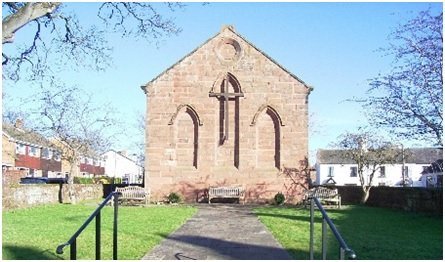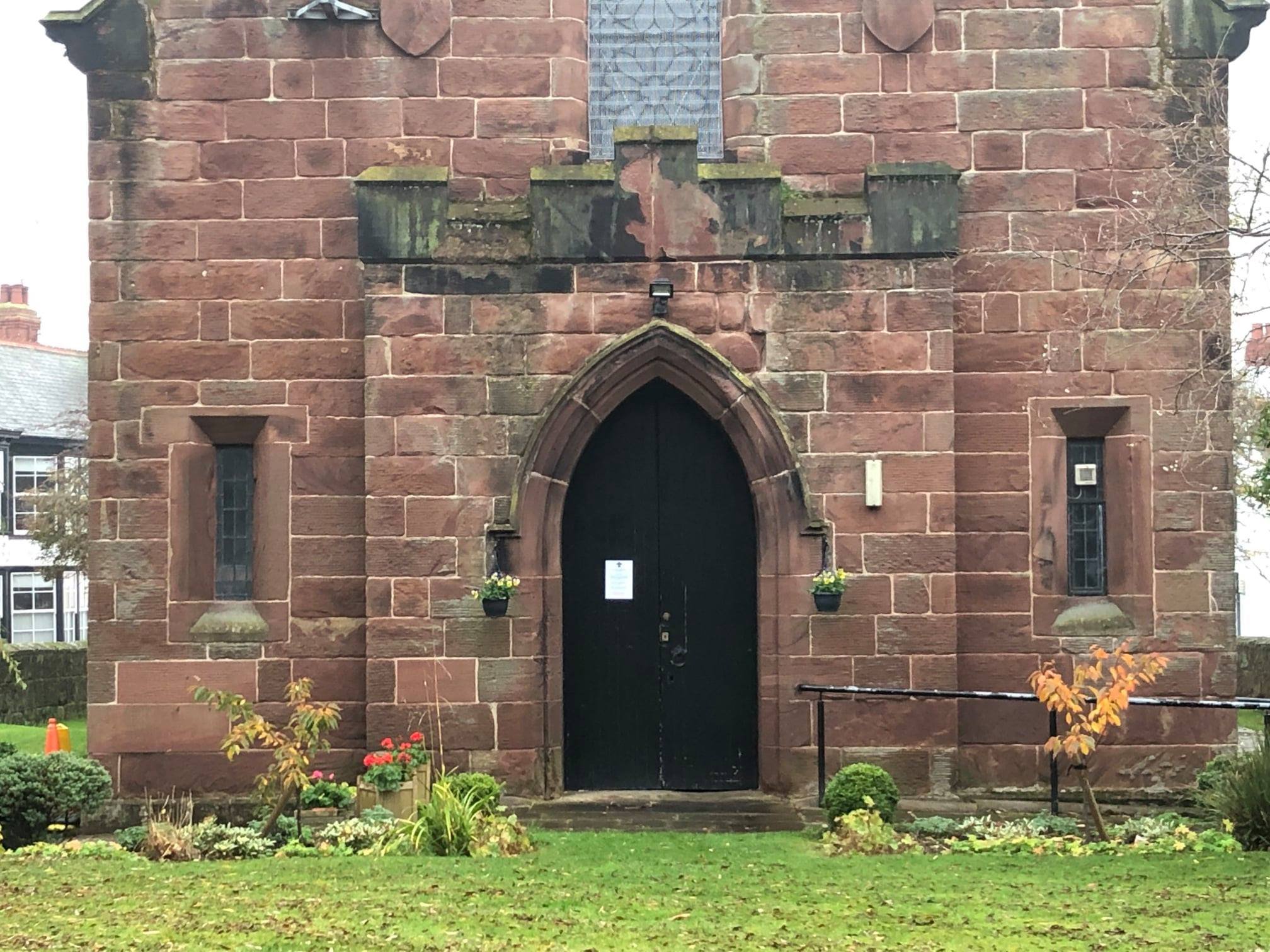AROUND Mostyn Square
The square lies at the heart of Parkgate village in the parish of Neston and is located astride the boundary between the ancient townships of Neston and Leighton. Before 1599 this boundary marked the northern extent of the old hunting park of Neston, which had been created in 1250 and extended southwards as far as Moorside Lane. The land to the north belonged to the Manor of Leighton. The present village thus incorporates land from both of these two domains.
Mrs Bushell’s boarding house, Mostyn Square, demolished c 1895
It was only after the sale of the park in 1599 that the present village started to develop, when fishermen’s cottages began to be constructed along the shore – nothing from this era remains, suggesting that these early dwellings were probably of timber construction. Roughly a century later, with the silting of the higher reaches of the navigable channel of the River Dee, ships began to discharge their cargoes along this shoreline – there was deep water off the point where the Boathouse now stands – and Parkgate gained in importance as the port for Chester, bringing to this area, from about 1680, a short period of relative prosperity through all the jobs associated with the shipping industry.
By this time all the land here was in the ownership of the Mostyn family of Mostyn Hall, Flintshire, as a result of the marriage of the heiress Bridget Savage of Leighton Hall to (Sir) Thomas Mostyn in 1672. Almost two centuries later, after the demise of the shipping trade here and following the decline of the village’s subsequent role as a fashionable health resort, the Mostyn family divested itself of all its land holdings in Cheshire. The sale, lasting six days, was held in 1849 at the Mostyn Arms, formerly the George Inn, where the Mostyn apartments now stand. This sale paved the way for further development in Parkgate, enhanced by the arrival of the railway in 1866. The Mostyn family may have departed, but clearly their name and influence still live on in Parkgate.
Nos 2 & 4 Mostyn Square
This terrace of Edwardian-style houses was erected just before the turn of the century, after the ancient houses shown in the previous picture were demolished on health grounds.
No 1 Mostyn Square
On the opposite corner is this former restaurant, currently standing empty in late 2022; it will be remembered under various re-incarnations over the last few years: having been opened by a budding entrepreneur Edwina Lilley as ‘Chompers’ in about 1980, it subsequently became ‘The Marsh Cat’, then ‘No 1 Mostyn Square’ and from 2019 until recently ‘Salty’s’.
Prominently situated in Mostyn Square is ‘the fishermen’s church’ (above), which has an interesting history. This simple building was originally erected as a Congregational chapel in 1843, funded mainly by a wealthy Yorkshire family, who with their friends spent the summer in Parkgate. After this source of funding dried up, it ran into debt and the building was rescued by another family, under whom it became a Presbyterian chapel in 1858. After the erection of a new Presbyterian chapel in Parkgate Road in 1884, built to serve both Parkgate and Neston, it had a period of only occasional use. It was subsequently leased to the Church of England in 1910 and dedicated to St Thomas the Apostle after its purchase seven years later. Its current status is that of a chapel of ease to the parish church of St Mary & St Helen, Neston. A century further on, after a period of 16 years out of use owing to the poor state of the building, it was restored and re-opened in 2010 for worship and community use.
Over the years the church has had a strong affinity with the local fishing community; the Parkgate fishermen used to use the area in front of the church for repairing their nets, as shown in the next photo.
This picture, taken about 1932, shows a group of Parkgate fishermen repairing their nets in the square in front of St Thomas’s church. The fisherman on the left with bare feet was Bill Smith, also known as “6ft!!” He worked on the boats with his brother, Dick Smith, and lived in Teal Cottage, next door to Seven Steps, on The Parade. In those days this was probably the only place where there was sufficient space for this work to be undertaken. The blocked-off gateway in the wall has since been re-opened as part of the 2010 refurbishment.
Coastguard Cottages
In the two lanes which run inland from Mostyn Square either side of the church are several cottages of interest. Off Coastguard Lane is a short terrace of four cottages built by the Royal Navy in 1858, after they took over responsibility for the coastguard service; they appear not to have been aware that Parkgate was no longer a significant port – the Irish packet service had transferred to Liverpool by 1815. However, four coastguards and their families were lodged in these cottages until 1875, when the premises were sold out of service to become private homes.
In School Lane, beyond the church, is the former 60-place Parkgate CE Infants School, which was built in 1860 thanks to the generosity of Christopher Bushell; he was a Liverpool wine importer, who lived at Hinderton Hall on the Chester High Road and funded other schools and charitable schemes in the Neston area. The school, by then a primary school, closed in 1967, when a new county primary school was opened nearby in Brookland Road. The former infant school building was then sold off and converted into a private dwelling.
Old School House, the former Parkgate Infant School
The children of Parkgate Infants School with their teachers in 1910
Photo courtesy Neston Past
Mostyn Cottage, School Lane
This late 18th century cottage, situated opposite the old infant school, was a private school for a time in the 1860/70s, when it was known as Parkgate Academy and run by a young Scotsman William Barrie as a boarding school for about 10 boys.
Photos: David Scott collection (3) – thanks to Burton & Neston History Society, plus Alan Passmore (5) and Gillian Lycett (2).
Last Updated January 2023










